The Role of a Seattle Architect in Sustainable Design
In a city known for its lush landscapes, tech-forward thinking, and environmental values, Seattle is home to architects who champion sustainability at every turn. As climate concerns grow, the role of a Seattle architect in sustainable design becomes more crucial than ever. In this article, we dive into how architects in Seattle—like Coates Design—are weaving eco-conscious strategies into building projects big and small.
1. Why Sustainable Architecture Matters in Seattle
Seattle’s distinctive rainy climate, temperate summers, and breathtaking views create a unique backdrop for building sustainably. Home and commercial property owners are increasingly conscious of:
- Lowering energy costs in damp, overcast conditions.
- Reducing environmental impact through responsible materials.
- Complying with local green building codes and incentives.
Engaging a Seattle architect skilled in sustainability means creating designs that are energy-efficient, resource-conscious, and aligned with the region’s values.
2. Key Principles of Sustainable Design
When evaluating eco-conscious architecture, Seattle architects focus on core themes that optimize performance while minimizing harmful impact:
- Energy Efficiency: High-performance windows, insulation, and HVAC systems reduce heating needs during cooler months.
- Passive Solar Design: Thoughtful orientation and window placement boost natural light and heat.
- Water Management: Rain gardens, green roofing, and low-flow fixtures respect Seattle’s heavy rainfall patterns.
- Sustainable Materials: Resource ratings, local sourcing, and reclaimed wood help reduce carbon footprints.
- Indoor Environmental Quality: Non-toxic finishes, natural ventilation, and ample daylight enhance occupant health.
- Resilience Planning: Structural strength, seismic considerations, and adaptability help buildings endure.
3. Integrating Local Climate and Landscape
3.1 Navigating Rain and Stormwater
Seattle’s notorious rain demands smart site planning:
- Rainwater Harvesting: Rain barrels and cisterns collect water for irrigation or graywater reuse.
- Permeable Landscaping: Porous driveways and green swales help water soak into the ground.
3.2 Passive Solar Strategies
Considering the city’s northern latitude and cloud cover, solar-conscious approaches include:
- Positioning living spaces toward the south to maximize daylight.
- Installing shading devices like overhangs to balance solar gain seasonally.
3.3 Respecting Views, Viewsheds & Trees
Seattle’s hilltop and waterfront homes require thoughtful siting to preserve stunning vistas and mature foliage. A sustainable Seattle architect crafts a design that respects both nature and neighborhood character.
4. Materials and Methods: Building Green in Seattle
4.1 Regional and Reclaimed Materials
Using local timber, locally milled stone, and recycled materials minimizes transportation emissions and supports local industry. Architects may incorporate salvaged wood for accents or framing, giving character and reducing waste.
4.2 Low‑VOC and Non‑Toxic Interiors
Choosing paints, flooring, cabinetry, and adhesives with low volatile organic compound (VOC) content helps indoor air quality. This supports a healthier Seattle lifestyle, especially important in tight, well-sealed buildings.
4.3 High‑Performance Assembly Techniques
Wall, roof, and foundation details matter. Techniques include:
- Advanced insulation (e.g., continuous insulation, spray foam, insulated sheathing).
- Super‑tight construction paired with mechanical ventilation to maintain air quality.
- Composite facade systems for durability and thermal performance.
5. Efficiency Through Technology
5.1 Energy Modeling
Software like energy modeling tools allows Seattle architects to simulate heating and cooling loads, optimize glazing patterns, and test insulation strategies. This results in homes that may be zoned for Passive House or net-zero performance.
5.2 Smart Home Integration
Sensors, occupancy-based lighting, and smart thermostats let homeowners save energy without sacrificing comfort—especially useful when switching between cloudy days and sunny bursts.
5.3 Renewable Energy Solutions
Solar photovoltaic (PV) panels are increasingly viable, even in Seattle’s climate. With thoughtful rooftop design and proper tilt, solar can offset electricity use for decades.
6. Code, Standards, and Certifications
Seattle’s progressive building codes provide incentives and floor‑area bonuses for sustainable design features:
- SEPA (Seattle Energy Performance Standard) promotes benchmarking and energy score thresholds.
- LEED, Passive House, Living Building Challenge, and Earth Advantage certifications elevate building performance.
- Programs like Built Green Seattle offer local pathways for rating and credentialing.
7. Collaboration: Integrated Design + Community Engagement
7.1 Team-Based Approach
A Seattle architect works closely with engineers, landscape architects, interior designers, and contractors to meet sustainability goals—like net-zero energy and low-carbon materials.
7.2 Community Feedback
Through public meetings and stakeholder review, sustainable design initiatives can align with neighborhood context. This approach builds trust, fosters acceptance, and preserves Seattle’s community character.
8. Cost & Return on Investment
While sustainable materials and technologies can raise upfront cost, Seattle homeowners often benefit from:
- Lower energy and water bills.
- Increased market value—eco-friendly homes often command premium resale prices.
- Health benefits and improved indoor comfort.
- Tax breaks, rebates, and incentives from utilities and government agencies.
9. Case Study: A Coates Design Sustainable Seattle Home
Project Overview: A 3,500 ft² custom home in West Seattle aiming for net-zero performance. Collaboration included structural engineering, solar installer, and landscape design.
Highlights:
- South-facing glass walls with thermally broken frames.
- Triple‑pane windows, R‑40 insulation, and continuous air sealing.
- 22 kW rooftop solar with battery backup.
- Planted bioswale managing stormwater runoff.
- Forest-safe lighting and drought-tolerant plantings.
Results:
- Annual energy usage: under 10 kBTU/ft².
- Net-zero electrical balance over a 12‑month span.
- Built Green 5‑star demonstration project.
10. Tips for Homeowners
- Start with energy modeling consultation in your early design phase.
- Prioritize insulation and airtight envelopes before fancy materials.
- Choose durable, local, low-VOC finishes.
- Incorporate passive design with orientation, shading, and daylighting.
- Investigate solar potential and utility incentives early.
- Plan for long-term operations: maintenance, control systems, and reuse strategies.
Conclusion
When a Seattle architect integrates sustainability deeply into design, the result is more than a beautiful building—it’s a living, efficient, resilient system. By combining climate-conscious strategies, smart siting, green materials, and community engagement, these projects reflect Seattle’s environmental ethos. Whether building a new home, renovating, or designing a workplace, Coates Design brings sustainable architecture to life.

